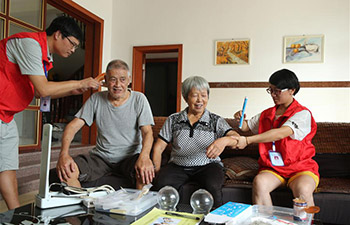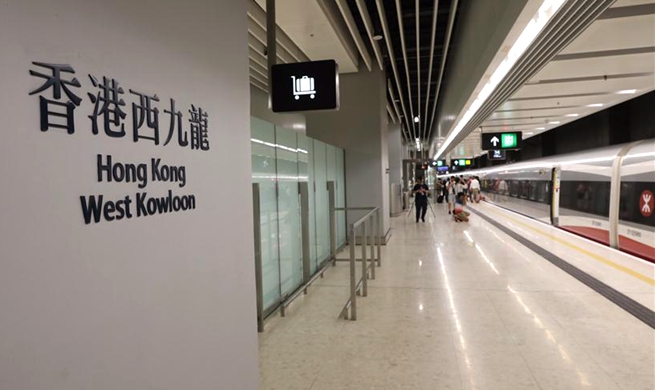WASHINGTON, Aug. 17 (Xinhua) -- Chinese researchers have developed the world's first-ever 4D printing for ceramics that are mechanically robust and can have complex shapes, offering broad potential applications in telecommunications, electronics and even space exploration.
Researchers at City University of Hong Kong reported in a study published on Friday in the journal Science Advances a novel "ceramic ink," a mixture of polymers and ceramic nanoparticles.
The 3D-printed ceramic precursors printed with this novel ink are soft and can be stretched three times beyond their initial length, according to the study.
These flexible and stretchable ceramic precursors allow complex shapes, such as origami folding. With proper heat treatment, ceramics with complex shapes can be made, making them the 4D ceramics.
4D printing is conventional 3D printing combined with the additional element of time as the fourth dimension, where the printed objects can re-shape or self-assemble themselves over time with external stimuli, such as mechanical force, temperature, or a magnetic field.
The existing 3D-printed ceramic precursors, which are usually difficult to deform, also hinder the 4D printing of ceramics with complex shapes.
The researchers led by Lv Jian, chair professor of mechanical engineering, made use of the elastic energy stored in the stretched precursors for shape morphing.
When the stretched ceramic precursors are released, they undergo self-reshaping and after heat treatment, the precursors turn into ceramics.
The resultant elastomer-derived ceramics are mechanically robust. They can have a high compressive strength-to-density ratio and can come in large sizes with high strength compared to other printed ceramics.
"With the versatile shape-morphing capability of the printed ceramic precursors, its application can be huge," said Lv.
One promising application will be for electronic devices because ceramic materials have much better performance in transmitting electromagnetic signals than metallic materials. With the arrival of 5G networks, ceramic products will play a more important role in the manufacture of electronic products.
Also, the artistic nature of ceramics and their capability to form complex shapes also provide the potential for consumers to tailor-make uniquely designed ceramic mobile phone back plates.
Furthermore, this innovation can be applied in aero industry and space exploration. "Since ceramic is a mechanically robust material that can tolerate high temperatures, the 4D-printed ceramic has high potential to be used as a propulsion component in the aerospace field," said Lv.

















